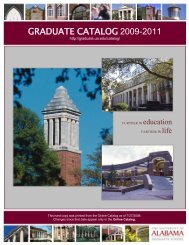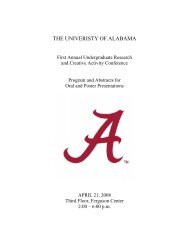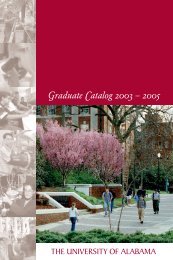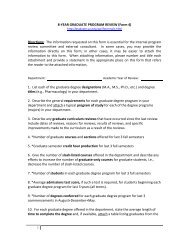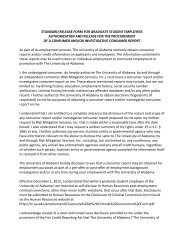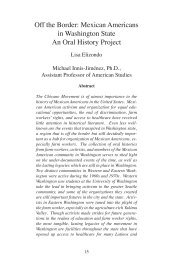Letters from a Planter's Daughter: Understanding Freedom and ...
Letters from a Planter's Daughter: Understanding Freedom and ...
Letters from a Planter's Daughter: Understanding Freedom and ...
Create successful ePaper yourself
Turn your PDF publications into a flip-book with our unique Google optimized e-Paper software.
173<br />
<strong>Letters</strong> <strong>from</strong> a Planter’s <strong>Daughter</strong><br />
in her most vulnerable <strong>and</strong> dependent state that her guardians recognized<br />
that she was an independent adult, able to make her own choices in life.<br />
Susanna did not escape Wesley’s household—nor could she escape<br />
the uncertainty of her life as a mixed-race planter’s daughter by “passing”<br />
across the color line. Knowing this, interpreting what freedom meant for a<br />
woman such as Susanna grows more difficult—is freedom so narrowly defined<br />
as to be emancipation <strong>from</strong> legal bondage, <strong>and</strong> nothing more? What<br />
does it mean for a person to be “free” when class <strong>and</strong> racial status keep<br />
her in a position of degradation? 121 Attempting to answer these questions<br />
requires self-conscious analysis about how we use the archive to read a<br />
life.<br />
*<br />
I cannot know what Susanna Townsend would think of someone who<br />
never saw, spoke with, or knew her attempting to draw lessons <strong>and</strong> “meaning”<br />
<strong>from</strong> her life. Perhaps she would be insulted—as though it were not<br />
meaning enough that she lived it. If there is a gr<strong>and</strong> theme to draw <strong>from</strong><br />
a narrative of her experiences, it comes too late for Susanna to benefit.<br />
Still, the tragedy sits too heavy <strong>and</strong> we long for redemption—for us, or<br />
her, or both. 122 Is it useful, then, to note that Susanna was back in school<br />
when she died? That her “last” letter <strong>and</strong> her “last” hope were her last only<br />
by chance before she succumbed to a long-term illness? That she did not<br />
die because a purposeful narrative arc had closed, Susanna having run<br />
out of hopes for an independent life? In fiction, Susanna’s choices would<br />
symbolize something poignant <strong>and</strong> easily pinpointed. In history, Susanna<br />
exercised her freedom while she lived because she lived, <strong>and</strong> perhaps the<br />
lesson to draw <strong>from</strong> that is a methodological one—that the greater purpose<br />
of telling stories such as Susanna’s may be nothing more than telling<br />
them, reasserting through them the existence of a woman named Susanna<br />
Townsend despite the problems of the archive.<br />
A reconstruction <strong>and</strong> examination of this life (1853-1869) that spanned<br />
the Civil War, slavery <strong>and</strong> freedom, as well as rural antebellum Alabama<br />
<strong>and</strong> urban Reconstruction-era Ohio provides insight into meanings of<br />
freedom, independence, <strong>and</strong> self-sufficiency in the post-emancipation mo-<br />
121 Fuentes, “Power <strong>and</strong> Historical Figuring: Rachael Pringle Polgreen’s Troubled Archive,”<br />
566.<br />
122 Hartman, Saidiya. “Venus in Two Acts.” Small Axe, Vol. 26, (June 2008).



